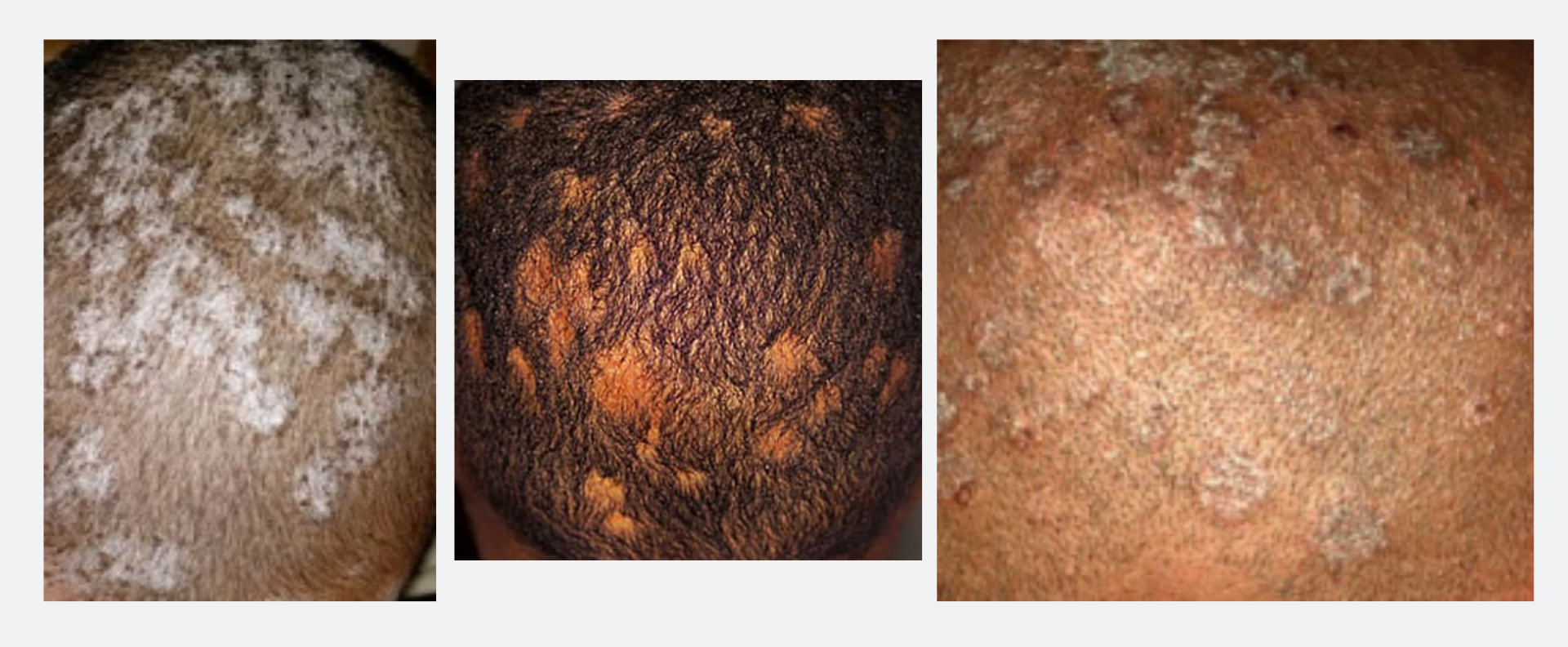What is it?
Despite its name, the ringworm of the scalp is not caused by a worm infection, rather, it is a fungal infection that typically causes a ring-shaped rash to form on the scalp.
Ringworm of the scalp is also known as tinea capitis. It is a highly contagious infection that typically spreads among children over the age of 6 months and presents a serious problem in pre-primary and primary schools. Through rare, the infection does also affect adults. It also affects boys more than girls.
What causes it?
Tinea capatis is caused by dermatophytes, a group of fungi that infect the keratin tissue in animals and humans. Keratin is a protein found in hair, nails, and skin. The tinea capatis infection affects the superficial skin of the hair and scalp. It can be painless or painful and itchy.
The infection is transmitted among children through contact and via the sharing of a towel, clothing, bedding, soap, comb and hairdressing equipment, and head gear.
It’s symptoms
Some individuals are symptomatic while others are asymptomatic.
The clinical manifestations of tinea capatis range from inexplicit, self-recovering scaling lesions to widespread Cicatricial alopecia, an inflammatory hair loss disorder. Itchy patches on the scalp may also manifest. Parts of the hair on the scalp may break off leaving bald patches.
Tinea capatis is sometimes confused with other skin infection such as psoriasis, a non-contagious autoimmune skin infection.
The asymptomatic carriers remain untreated and may unwittingly infect others.
Traditional remedies
Since ringworm is caused by fungi, a remedy should prevent the growth of fungi (i.e., it should be antifungal). The following outlines some traditional remedies for this infection:
- Garlic has been shown to have antifungal properties. To treat ringworms – crush the garlic, add a bit of coconut oil, and applying it on the affected area.
- Apple cider vinegar is scientifically proven to have antifungal properties. To treat ringworms – dip cotton on the vinegar and apply on the affected area.
- Tea tree oil is also known for having antifungal properties. To treat ringworms – dip a cotton on the oil and apply on the affected area.
- The bulb of uvimba (Hypoxis hemerocallidea) along with the bulb of ikhambi lezingane (Ledebouria revoluta) are used to treat ringworms. The two plants contain antifungal activities, and the mixture has been used to treat ringworms.
- Macerated leaves and leaf paste of the intshungu (Momordica balsamina) plant are used to treat ringworms.
- The icena (Aloe maculata) leaf pulp and yellow juice are used to treat ringworms. The plant contains antifungal activities and has been used to treat ringworms.
- People in Sokoto, Nigeria, use the bark extracts from the apple of Solom (Calotropis procera) to treat the ringworm of the scalp. The apple of Sodom is native to both Africa and Asia. It has antifungal properties that make it ideal for treating ringworms.
My brother had ringworm of the scalp as a child and my mother used a brake fluid to treat the infection. This form of treatment is very popular, but it is not medically recommended. Brake fluid is highly corrosive, it can cause burns on the skin. Instead of the brake fluid try the traditional remedies, they are safer and cheaper.
Learn about remedies used to ringworms, by accessing uvimba (Hypoxis hemerocallidea)
Safety precaution:
The use of traditional medicine in prescribed dosages will yield good results. Misuse and abuse may lead to complications. To learn about correct dosage, consult a traditional healer or a herbalist. You can also visit imithiyesintu.co.za or email: info@imithiyesintu.co.za to learn more about traditional medicine.
